The stone has a rich history of use as a building material, but today it is difficult to call it a leader in this industry. It is increasingly being replaced by artificial agglomerates and composite products, similar in operational properties. Nevertheless, connoisseurs of the natural beauty of natural minerals turn to this material, trying to get the original home decoration or piece decorative items. Invaluable help in this matter is provided by the stone processing machine, which is presented in the huge range of industrial equipment on the market.
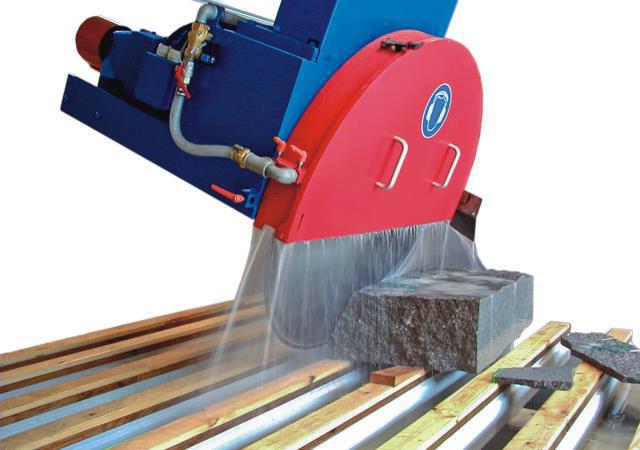
Features of home stone processing on machine tools
Not all stones can be processed at home. The main classification of stone as building material distinguishes hard and soft rocks. The first group can only be processed by specialized industrial equipment in the factory. Only individual grinding operations can be carried out with a solid stone in everyday life. As for soft rocks, almost all operations applied to metals are available to them. But even in this case, appropriate conditions should be created for the work process. Firstly, a stone processing machine used at home requires a separate room. Secondly, the operating rules provide for the organization of an efficient exhaust system. The fact is, work with stone is accompanied by the release of specific heavy dust that is harmful to the respiratory system. Therefore, cutting and grinding should be carried out only in conditions of stable disposal of working waste.
Types of Processing Operations
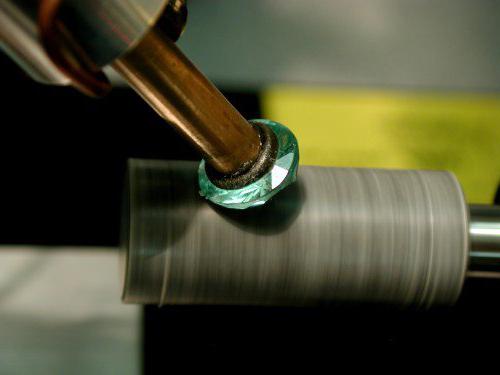
The most common operation is cutting. For such work, disk models of carvers with a bed are intended. They differ in compact size, and in some versions, and a mobile platform. Household stone milling machines perform spot cutting of surfaces, in some cases achieving an engraving effect. With the help of such equipment, you can form a texture pattern on the stone surface, adjust the edge, or create technological grooves.
Stone polishing is also popular. For this operation, a bed is not always required, therefore processing is also possible with a hand tool. The main working element is the grinding abrasive wheel. A more accurate result allows to obtain a polishing operation for which special abrasive wheels and pastes are used. Similar tasks, in particular, are performed by machines for processing precious stones, equipped with diamond discs and drilling cutters. If necessary, adjust the effect of polishing by hand polishers.
Key Features
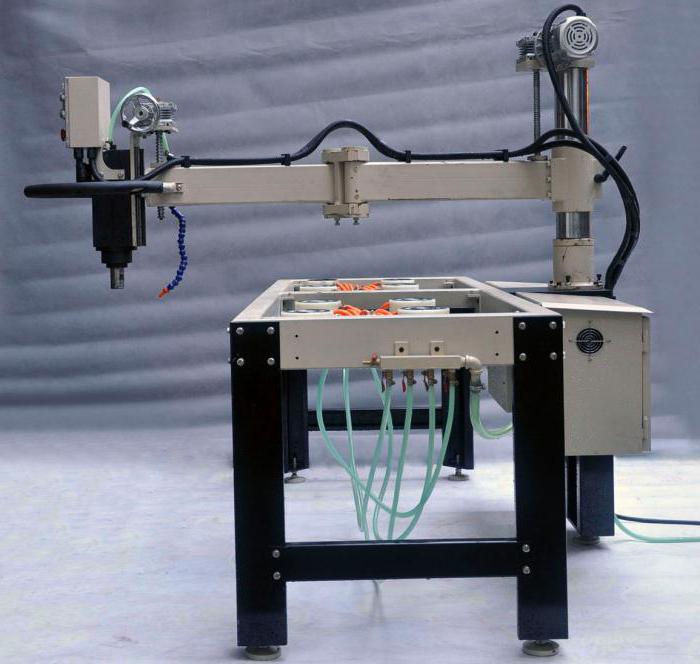
The main difference between household and industrial machines is a low or medium level of productivity. It depends on the power of the machine, which usually varies from 200 to 500 watts. This is a single-phase equipment that can be connected to a 220 V network. The speed indicator directly follows from the power. For example, polishing machines equipped with felt wheels provide speeds in the range of 500-800 rpm. This is enough to work with small sized stones, characterized by a soft structure. An engraving machine for processing stone with cutters can provide an engine frequency of 1,500 rpm. It will already be a full-format unit, only an optimized design will tell about belonging to the domestic segment.Therefore, at average power, such models will also have limitations in terms of the permissible dimensions of the stone.
Features of CNC models
Models with numerical program control (CNC) are rarely used in machines for home processing due to the initial simplicity of operations. In addition, electronic control is often introduced in order to link several machines with one controller - it is obvious that such a need is unnecessary in domestic use. Nevertheless, polishing and engraving models are quite justified in receiving modifications with automation and computer control, allowing more accurate performance of individual operations. In particular, stone processing on CNC machines provides the ability to correct faces in accordance with a given computer model, which is loaded into the controller via a special relay. Moreover, some models can independently determine the cutting parameters, focusing on the initial data on the parameters of the workpiece, obtained using sensors.

Accessories and equipment for machine tools
Depending on the type of machine, cutters, polishing and grinding wheels, drills, etc. may be required as a consumable. The widest and most popular range of cutters, which, depending on the configuration, can solve different problems. Home machines can be equipped with cylindrical, end, end, angle, shaped and other types of mills. A complete set of such equipment will allow, within one working cycle, to correct the planes of the workpiece, to form grooves and protrusions, bevels, etc. The stone grinding machine is equipped with felt, felt and diamond disks. Depending on the grain size, such circles allow processing to varying degrees - from rough grinding to spot polishing. In addition to directly working equipment, it will not be out of place to provide for auxiliary structural parts. For example, tacking will allow you to securely fix the stone in a vice, and for large workpieces, clamps and stops are used.
Household Stone Machine Manufacturers
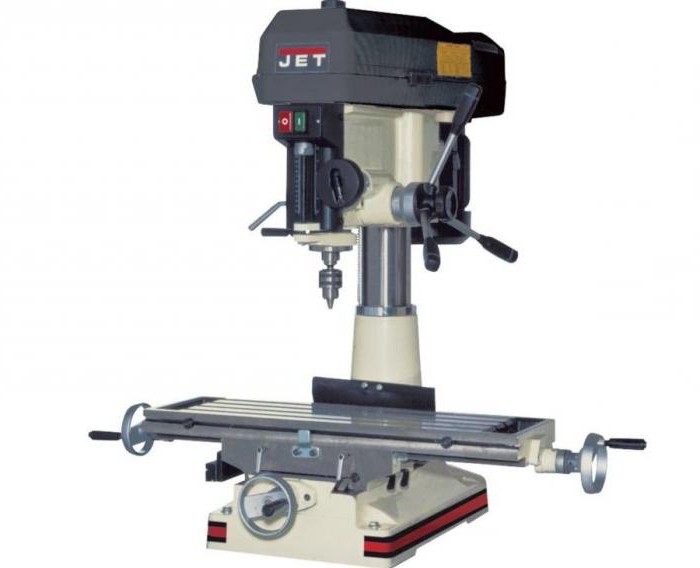
The leading companies in the segment include JET, Elitech, Aiken, etc. Each of these manufacturers contains in its assortment a separate line of equipment for homework with stone. For example, JET presents several JMD series that are intended for modelers working with small workpieces. The largest machines of this family have a capacity of up to 750 watts and can be installed in a small workshop. The frame is fastened with ordinary screws. The cost of units from these firms averages 40-50 thousand rubles. In the assortments of Russian companies you can find a home machine for processing stone worth 20-25 thousand. These are also small, but low-power models from manufacturers "Bison", "Corvette", "Foreman" and others.
Workflow Recommendations
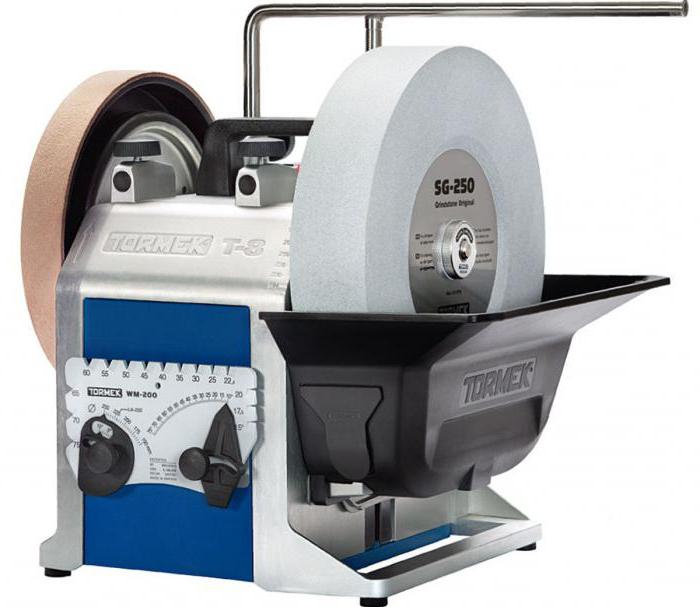
Initially, it is important to organize a clean and free place where, if necessary, a desktop with a metal platform will have to stand. The machine should be firmly fixed on it, initially checking the connections of its functional parts and the fixation of the equipment. It has already been said about the danger of stone dust to health, therefore, personal protective equipment should be prepared without fail. Workwear should include an apron, wrist-covered gloves, a hat, goggles and a respirator. In the future, it is necessary to strictly observe the sequence of work operations. After starting, you must wait until the stone processing machine reaches its optimum operating speed. The disc or cutter should gain sufficient speed, after which it is possible to feed the material. The contact of the working nozzle with the stone should be smooth and monotonous - without jerking. At the end of processing, it is necessary to observe the parallelism of the processes of stopping spindle rotation and removal of the workpiece.
Conclusion
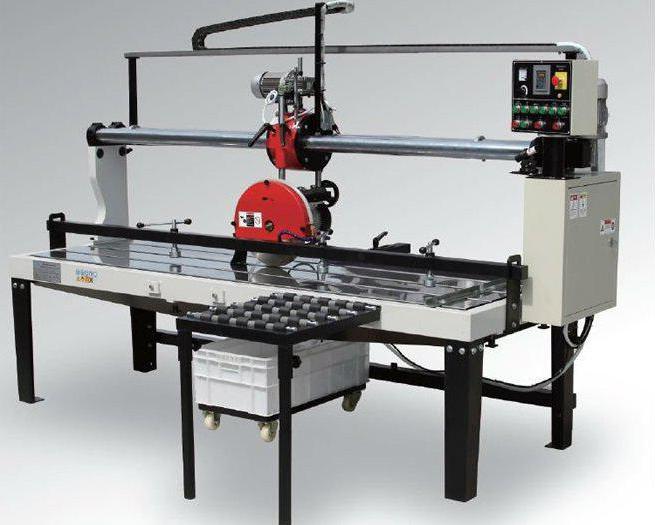
In the choice of a machine should be based on the direction of its future use. Moreover, not only the type of work operations is determined, but also the requirements for the result, the regularity of the work and the characteristics of the material. Those who plan to organize a workshop at home and produce decorative products should pay attention to CNC milling machines for stone processing, which will allow for high-precision engraving with maximum convenience for the operator himself. If the task is of a purely practical nature in the form of correction of stone slabs for the subsequent laying of walls or paths, then it makes sense to focus on powerful machines, albeit with a minimum set of functional capabilities. A universal model will be a win-win option, but for the price this solution will correspond to the initial level of the already professional segment.
